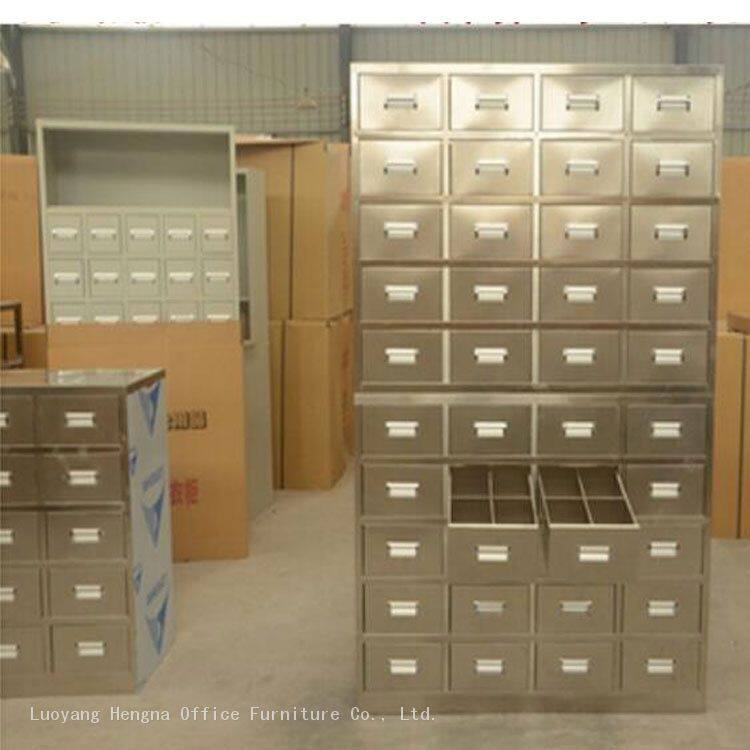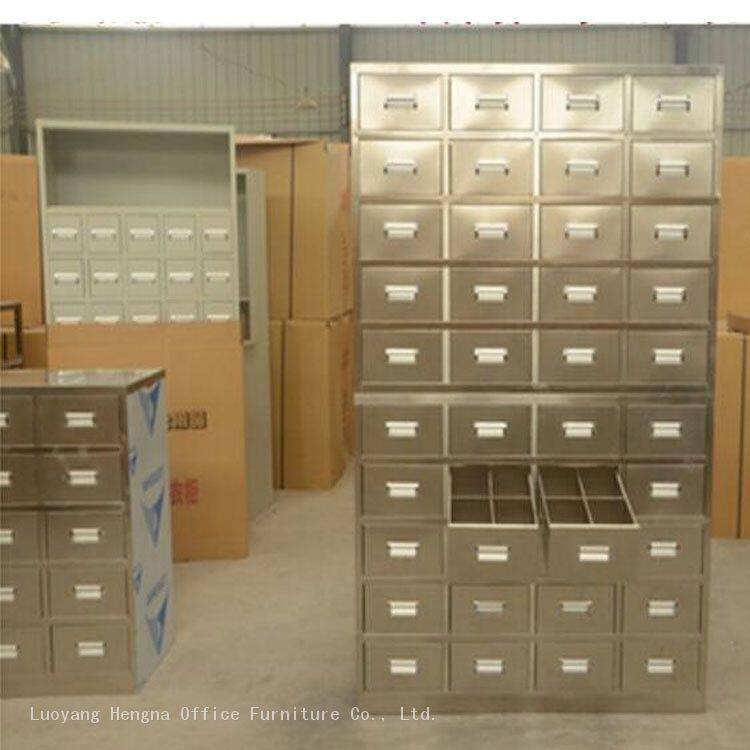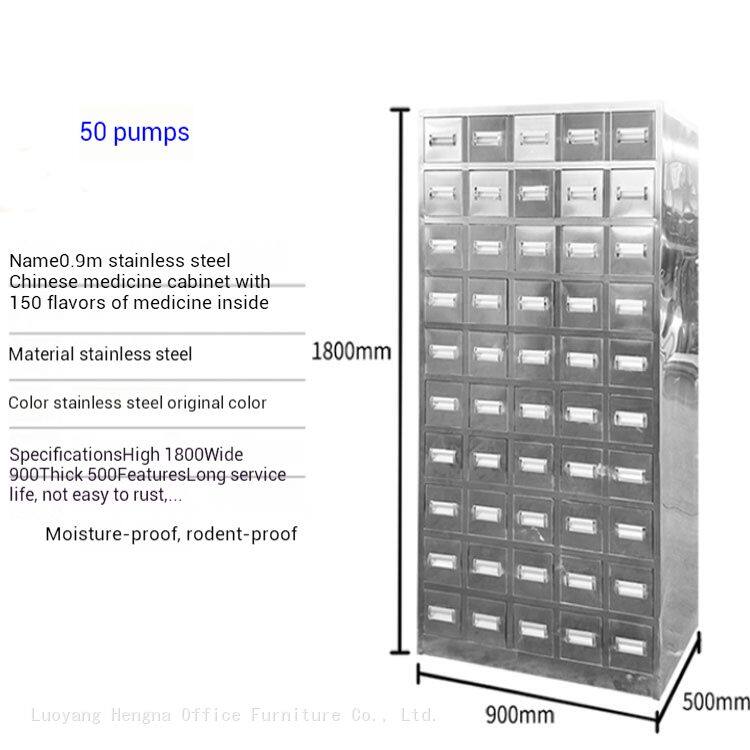-
 Sarah
Hi there! Welcome to my shop. Let me know if you have any questions.
Sarah
Hi there! Welcome to my shop. Let me know if you have any questions.
Your message has exceeded the limit.

How to Maintain and Clean Stainless Steel Apothecary Cabinets
2025-10-25 16:03:03
Stainless steel apothecary cabinets represent a significant investment in both functionality and aesthetics for pharmacies, laboratories, and medical facilities. These specialized storage units combine the durability of stainless steel with the organizational needs of professional environments. However, to maintain their pristine appearance and operational efficiency, proper care and maintenance are essential. This comprehensive guide will walk you through the best practices for cleaning and maintaining your stainless steel apothecary cabinets, ensuring they remain in excellent condition for years to come.
Why Proper Maintenance Matters for Stainless Steel Apothecary Cabinets
Stainless steel is renowned for its corrosion resistance and durability, but it’s not entirely maintenance-free. In environments where apothecary cabinets are typically used—pharmacies, hospitals, and research facilities—these cabinets face constant exposure to various substances that can compromise their integrity:
Chemical Exposure: Medications, cleaning agents, and disinfectants can leave residues that may affect the stainless steel surface over time
Frequent Contact: Regular handling by staff can lead to fingerprints, smudges, and surface wear
Environmental Factors: Humidity, temperature fluctuations, and airborne particles can impact the cabinet’s appearance and performance

Proper maintenance not only preserves the aesthetic appeal of your cabinets but also ensures they continue to provide the sterile, secure storage environment essential for pharmaceutical and medical applications.
Daily Maintenance Routine: Keeping Your Cabinets Pristine
Establishing a consistent daily maintenance routine is the first line of defense against wear and tear on your stainless steel apothecary cabinets. Here’s a simple yet effective daily care regimen:
Quick Wipe-Down Protocol
Use Microfiber Cloths: Always use clean, lint-free microfiber cloths to avoid scratching the surface
Follow the Grain: Wipe in the direction of the stainless steel grain to prevent streaking and maintain the finish
Remove Fingerprints Immediately: Address fingerprints and smudges as they occur to prevent buildup
Check for Spills: Promptly clean any liquid spills to prevent potential staining or damage
Daily Inspection Checklist
[ ] Remove visible fingerprints and smudges
[ ] Check for spills or residue from medications
[ ] Ensure door handles and latches are clean
[ ] Verify that all surfaces are dry after cleaning
[ ] Inspect for any signs of damage or wear
Weekly Deep Cleaning: Restoring the Original Luster
While daily maintenance addresses surface issues, a more thorough weekly cleaning is necessary to maintain the long-term beauty and functionality of your stainless steel apothecary cabinets.
Materials Needed for Weekly Cleaning
pH-neutral stainless steel cleaner
Two clean microfiber cloths
Warm water
Soft-bristled brush (for crevices)
Isopropyl alcohol (for disinfection)
Step-by-Step Deep Cleaning Process
Empty the Cabinet: Remove all contents to access all surfaces
Dust Removal: Use a dry microfiber cloth to remove loose dust and debris
Prepare Cleaning Solution: Mix a small amount of pH-neutral cleaner with warm water
Clean Surfaces: Wipe all surfaces with the cleaning solution, following the grain
Disinfect: Apply isopropyl alcohol to high-touch areas like handles and latches
Dry Thoroughly: Use a clean, dry microfiber cloth to prevent water spots
Polish: Apply a small amount of stainless steel polish for added protection and shine
Monthly Maintenance: Addressing Tough Stains and Preventive Care
Monthly maintenance focuses on addressing more challenging issues and implementing preventive measures to extend the life of your stainless steel apothecary cabinets.
Handling Tough Stains and Discoloration
Different types of stains require specific approaches:
| Stain Type | Recommended Treatment | Precautions |
|---|---|---|
| Rust spots | Mild abrasive cleaner or baking soda paste | Test in inconspicuous area first |
| Hard water deposits | White vinegar solution | Rinse thoroughly after treatment |
| Chemical residue | Specialized stainless steel cleaner | Avoid harsh chemicals |
| Adhesive residue | Isopropyl alcohol or adhesive remover | Use sparingly |
Preventive Maintenance Measures
Apply Protective Coating: Consider applying a stainless steel protectant to create a barrier against fingerprints and stains
Check Hardware: Tighten loose screws, hinges, and handles
Inspect Seals: Examine door seals for wear and replace if necessary
Lubricate Moving Parts: Apply silicone-based lubricant to hinges and slides
Products to Use and Avoid: Ensuring Safe Cleaning
Not all cleaning products are suitable for stainless steel apothecary cabinets. Using the wrong products can damage the surface and compromise the cabinet’s integrity.
Recommended Cleaning Products
pH-neutral stainless steel cleaners
Microfiber cleaning cloths
Isopropyl alcohol (70% solution)
Baking soda for gentle abrasion
White vinegar for mineral deposits
Commercial stainless steel polishes
Products to Avoid
Chlorine-based cleaners (bleach)
Abrasive sponges or steel wool
Harsh chemicals like ammonia or oven cleaner
Glass cleaners containing ammonia
Scouring powders
Tap water (can leave mineral deposits)
Troubleshooting Common Issues
Even with proper maintenance, you may encounter some common issues with your stainless steel apothecary cabinets. Here’s how to address them:
Problem: Scratches on the Surface
Solution: Minor scratches can often be minimized with a stainless steel scratch remover kit. For deeper scratches, professional refinishing may be necessary.
Problem: Persistent Fingerprints
Solution: Clean with a microfiber cloth dampened with isopropyl alcohol, then dry thoroughly. Apply a stainless steel protectant to resist future fingerprints.
Problem: Discoloration or Cloudiness
Solution: This is often caused by hard water or chemical exposure. Clean with a mixture of white vinegar and water, rinse thoroughly, and dry completely.

Problem: Sticky Residue
Solution: Use isopropyl alcohol or a specialized adhesive remover. Apply sparingly and wipe clean immediately.
Seasonal Maintenance: Comprehensive Care
At least twice a year, perform a comprehensive maintenance check on your stainless steel apothecary cabinets:
Seasonal Maintenance Checklist
[ ] Deep clean all interior and exterior surfaces
[ ] Inspect and clean all hardware
[ ] Check for signs of corrosion or wear
[ ] Test door seals and replace if necessary
[ ] Lubricate all moving parts
[ ] Apply protective coating if needed
[ ] Document any issues for professional repair
Conclusion: The Value of Consistent Care
Maintaining and cleaning your stainless steel apothecary cabinets is not just about preserving their appearance—it’s about protecting your investment and ensuring the safety and integrity of the stored contents. By following the guidelines outlined in this article, you can extend the life of your cabinets, maintain their professional appearance, and ensure they continue to provide the secure, sterile storage environment essential for pharmaceutical and medical applications.
Remember that consistency is key to effective maintenance. Establish regular cleaning routines, address issues promptly, and use only recommended cleaning products. With proper care, your stainless steel apothecary cabinets will continue to serve your facility effectively for many years, maintaining their beauty and functionality while meeting the exacting standards of professional healthcare and pharmaceutical environments.
Tags: Clean Stainless Steel Apothecary Cabinets, Steel Apothecary Cabinets

